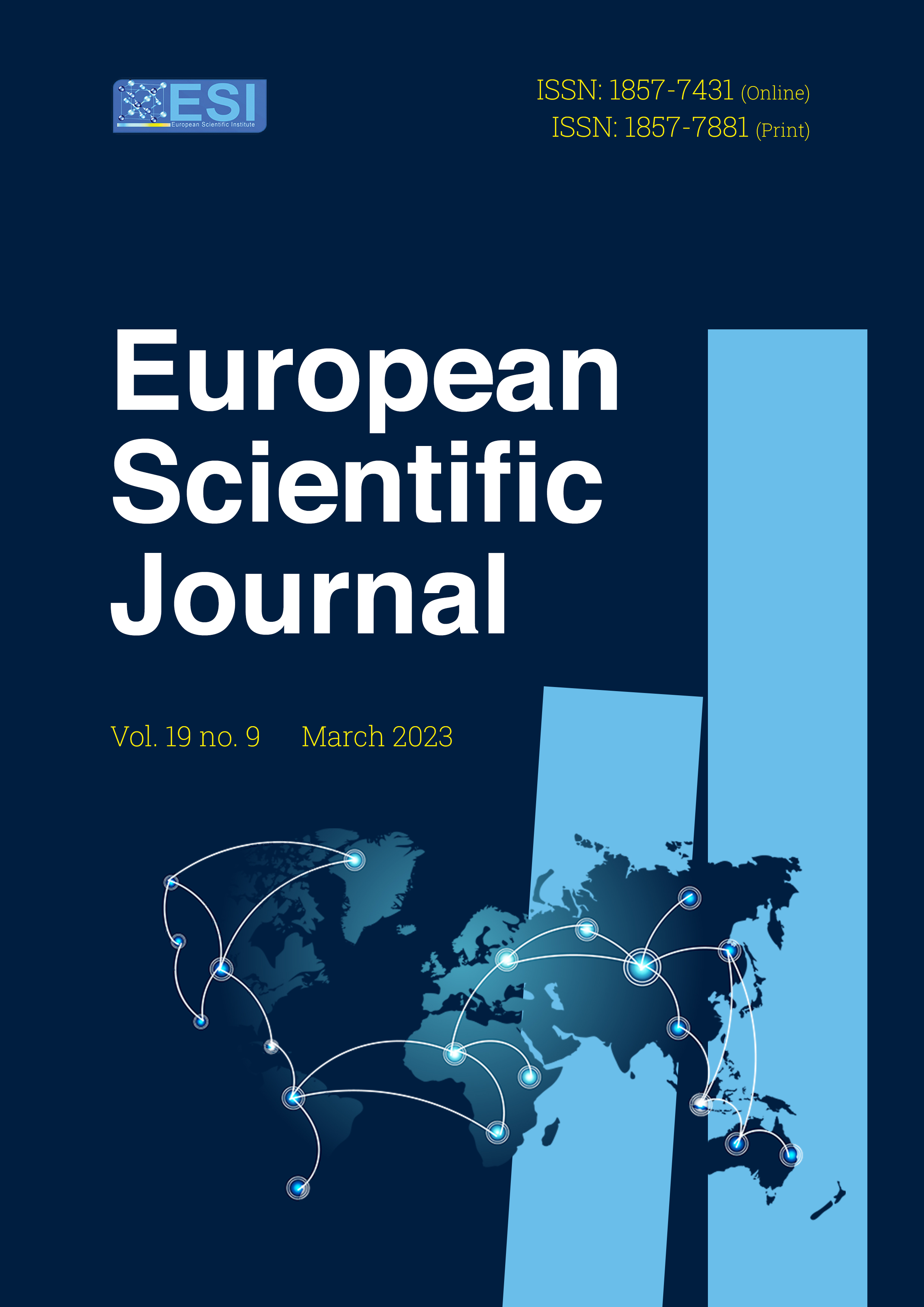Evaluation des Doses Variables du Miel Local de Apis Mellifera adansonii Latr. 1789 du Congo sur les Performances Zootechniques des Poulets de Chair standard
Abstract
Le miel est un produit qui renferme des propriétés nutritives susceptibles de stimuler les performances zootechniques des volailles. L’objectif de cette étude était de déterminer le taux d’incorporation optimal du miel dans les rations des poulets de chair. Un échantillon de 105 poussins de chair a été réparti en trois lots de 35 sujets (témoin, traité 1 et traité 2).Chaque lot a été ensuite subdivisé en 5 répétitions de 7 sujets chacun. Les lots traités 1 et 2 ont reçu des doses du miel dans la ration alimentaire respectivement au démarrage 0,5% et 1%, en croissance 1% et 2% et en finition 1% et 4%. Le premier lot a servi de témoin. Les lots ont été comparés sur les variables de la croissance pondérale. Les résultats ont montré au cours de la phase de démarrage une amélioration significative (P < 0,05) de la consommation volontaire des aliments (30,5 g contre 34,8 g), du GMQ (22,7 g/jour contre 23,4 g/ jour), l’IC (1,3 contre 1,4) et le poids vif à 14 jours (359g contre 377 g). Par contre au cours de la phase de croissance, aucune différence significative n’a été notée dans la ration contenant 1% de miel. En revanche pendant la phase de finition, une amélioration significative a été observée sur tous les paramètres étudiés. Cette étude suggère l’utilisation du miel à la dose de 0,5% pendant les phases de démarrage et de croissance et à 1% au cours de la phase de finition.
Honey is a natural bee product containing nutritional properties able to stimulate the performance of poultry. The study aimed to determine the optimal rate of honey in the diets of broiler. A sample of 105 chicks has been randomized and then divided into three groups of 35 chicks each (One control and two treated groups). Then each group was then divided in 5 replicates of 7 chicks. The treated groups received doses of honey at the starting 0.5% and 1%, in growing 1% and 2% finally in finishing stage 1% and 4% respectively. Groups were compared on the growth parameters. The results showed that during the starting stage, a significant improvement (P < 0.05) was observed on feed intake (30.5g vs 34.8g), DWG (22.7g per day vs 23.4g per day), feed efficiency (1.3 vs 1.4) and body live weight (359 vs 377g at 14 days). However, during the growing stage, no significant difference was observed on feed containing 1% of honey. Moreover, during the finishing stage, all the studied parameters were improved by honey at 1%. Therefore, the present study indicated the useful of honey at 0.5% during the starting and growing stages while 1% may be used during the finishing stage
Downloads
PlumX Statistics
References
2. Bankovas V., Popova M., & Bogdanov S. (2002). Combined antibacterial and properties of water soluble fractions of royal jelly. Zeitschrift fur Naturforschung C-A Journal of Biosciences, 57: 530-533.
3. Coulibaly Bakary, Diomandé Massé, Konaté Ibrahim, Bohoua Louis Guichard (2019). Qualité Microbiologique, Propriétés Physicochimiques et Profil Sensoriel de Miels de la Région du Worodougou, Côte d’Ivoire. European Scientific Journal, 15 (30) : 1-22. http://dx.doi.org/10.19044/esj.2019.v15n30p72.
4. Diamouangana J (2003). Les perturbations dans les formations végétales du Congo-Brazzaville valeurs indicatrices de quelques variables climatiques, Acta Botanica Gallica, 150:3, 331-343, DOI: 10.1080/12538078.2003.10516000
5. FAO, 2009. Schéma directeur pour le développement des filières de l'élevage au Congo. Volume 2, 49p
6. Gheldof N., & Engeseth N.J. (2002). Antioxidant capacity of honeys from various floral sources based on the determination of oxygen radical absorbance capacity and inhibition of in vitro lipoprotein oxidation in human serum samples. Journal Agricultural Food Chemical, 50 (10): 3050-3055.
7. Hazelwood R.L. 1984. Pancreatic hormones, insulin/glucagon molar ratios, and somatostatin as determinants of avian carbohydrate metabolism. Journal of Experimental Zoology, (232), : 647-652.
8. Kouamé K.F., Gbouhoury E-K. B., Fofié N’Guessan B.Y. & Kassi N’Dja J. (2021). Caractéristiques Physicochimiques Récoltés des Miels de la Sous-Préfecture de Cechi (dans le Département D’Agboville, Côte D’Ivoire). European Scientific Journal, ESJ, 17(34), 286. https://doi.org/10.19044/esj.2021.v17n34: p286
9. Lefief-Delcourt A. (2010). Le miel malin: Tous les bienfaits pour cet ingrédient délicieux et 100% naturel. Editions Leduc, Paris, 177P..
10. Lika, E.; Kosti´c, M.;Vještica, S.; Milojevi´c, I.; Puvaˇca, N. (2021). Honeybee and Plant Products as Natural Antimicrobials in Enhancement of Poultry Health and Production. Sustainability Animal_nutririon_and welfare in Substenable Production Systems, 13(15) : https://doi.org/10.3390/su13158467
11. Obun C.O., Yahaya M.S., Olafadehan O.A., kehinde A.S., Allison D.S., Yusuf A.M., & Farouk I.U., 2008. Dietary value of honey and it effects on abdominal fat deposit blood and serum profile of finisher broiler chicks. Journal of Agriculture, Forestry and Social Sciences, 6 (2): https://doi.org/10.4314/joafss.v6i2.60293
12. Ouchemoukh, S (2003). Caractérisation physico-chimique d'échantillons de miel d'origine locale. Master en Biochimie : Université Abderrahmane Mira. Faculté des Sciences de la Nature et de la Vie de Bejala, Algérie, 69 P.
13. Rideau N., & Métayer-Coustard S. (2012). Utilisation périphérique du glucose chez le poulet et le canard : Implications pour la croissance et la qualité de la viande. Institut National de la Recherche Agronomique, Productions Animales, 25 (4) : 337-350.
14. Sanjay Kumar, Prased C.M., & Sushma Kumari. (2015). Influence of stress management on blood profile of broiler chikens. Indian Journal of Animal Production and Management, 31 (3/4): 141-145.
15. Sfich T. B. AhouandjinouMonique G. TossouHounnankpon Yédomonhan Adéline ZanouAristide C. AdomouAkpovi Akoègninou et Comlan M. Koudegnan (2017) Importance Du Couplage De L’inventaire Des Plantes Mellifères Et De L’analyse Pollinique Des Miels De La Saison Des Pluies En Zone Ouest Soudanienne AuNord-Bénin European Scientific Journal, 13(6): 1857 – 1881.
Copyright (c) 2023 Mbanza –Mbanza B.B., Bati J.B., Adzona P.P., Guembo J.R., Ntsoumou M.V., Saboukoulou A.J., Banga Mboko H.

This work is licensed under a Creative Commons Attribution-NonCommercial-NoDerivatives 4.0 International License.








